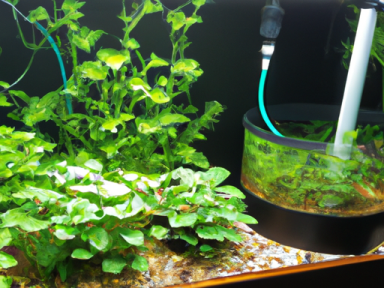Aquaponic Gardening: Sustainable and Space-Efficient Survival
Imagine a crisis strikes, a disaster unfolds, or society collapses. The comfort and convenience of our modern world crumble before our eyes. Panic sets in as food shortages become a harsh reality. Is this the moment you find yourself unprepared?
In times of uncertainty, the ability to feed yourself and your loved ones becomes paramount. That’s why I’m here to introduce you to the concept of aquaponic gardening – a sustainable and space-efficient solution for growing your own food.
What is Aquaponic Gardening?
Aquaponic gardening is a unique and efficient system that combines aquaculture (raising fish) and hydroponics (growing plants in water) for mutually beneficial results. In this closed-loop system, plants and fish thrive together, creating a symbiotic relationship.
Here’s how it works:
- Fish Tank: The fish tank serves as the primary component of the system. Choose freshwater fish that are hardy and well-suited to your climate.
- Grow Bed: The water from the fish tank is pumped into the grow beds. These beds are filled with a growing medium like gravel, clay pellets, or coconut coir, which provides support for the plants.
- Planting: The plants are then planted in the grow beds. They absorb the nutrients from the fish waste in the water and act as a natural filtration system, cleaning the water for the fish.
- Nitrogen Cycle: The fish produce waste (ammonia), which is broken down by beneficial bacteria into nitrites and then nitrates. These nitrates serve as the nutrients for the plants.
- Water Filtration: Through this process, the water is naturally filtered and oxygenated, returning to the fish tank clean and ready for the fish to thrive.
Why Choose Aquaponic Gardening?
Aquaponic gardening offers numerous benefits, making it an ideal solution for self-sustainability in a crisis:
- Space Efficiency: Aquaponic systems can be set up vertically, making them perfect for limited spaces like small yards, balconies, or even indoors. You can grow more food in less space.
- Water Conservation: With aquaponics, you can save up to 90% more water compared to traditional soil gardening. The water in the system is continuously recirculated and reused.
- Nutrient-Rich Produce: The plants in an aquaponic system receive a constant supply of nutrient-rich water, resulting in faster and healthier growth.
- Year-Round Harvest: Unlike traditional gardening, aquaponics allows you to grow food year-round, regardless of the season or weather conditions.
- Sustainable Food Source: By growing your own food in an aquaponic system, you reduce reliance on external food sources, ensuring a steady food supply for you and your family.
Getting Started with Aquaponic Gardening
Now that you understand the basics of aquaponic gardening and its benefits, it’s time to take action and start your own system:
- Research and Education: Gain a thorough understanding of the principles and techniques of aquaponic gardening. Attend workshops, read books, and connect with experienced aquaponic gardeners.
- Choose the Right System: Determine the size and type of aquaponic system that suits your available space, budget, and needs. There are various options available, such as media bed systems, nutrient film technique (NFT) systems, and deep water culture (DWC) systems.
- Set Up: Acquire the necessary materials and components for your system, such as a fish tank, grow beds, plumbing, pumps, and a water filtration system. Follow proper installation instructions to ensure the success of your system.
- Selecting Fish and Plants: Research fish species that are well-suited to your climate and consider the requirements of both the fish and the plants you wish to grow. Customize your system accordingly.
- Maintenance and Monitoring: Regularly monitor water quality, temperature, pH levels, and nutrient levels. Proper maintenance, such as feeding the fish, planting new seeds, and pruning plants, is essential for a thriving system.
- Expand and Experiment: Once you have gained confidence and experience with your aquaponic system, consider expanding and experimenting with different plant varieties and fish species.
Aquaponic gardening is more than just a hobby – it’s a strategic step towards self-reliance and survival. By embracing this innovative system, you ensure a constant supply of fresh produce, reduced reliance on external food sources, and the peace of mind that comes with being prepared for whatever the future may hold.
Don’t wait for a crisis to strike before taking action. Start your aquaponic gardening journey today, and empower yourself with the skills and knowledge to thrive in any situation.




GIPHY App Key not set. Please check settings